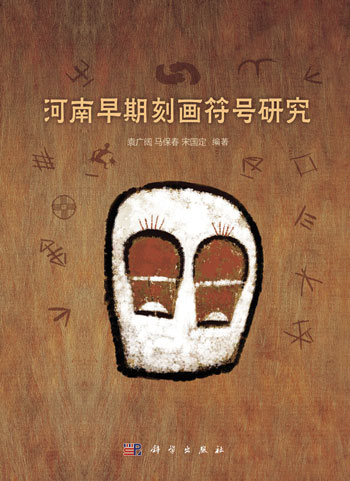Tracing the Relationship between China’s Early Symbols and Writing—A Review of the book "A Study of Early Period Depictive Symbols from Henan Province"
Since 2002, China has been conducting a large-scale project exploring the origin of Chinese civilization. Preliminary research done in 2002-2003 for the Chinese Civilization Project identified nine topics, including “Chinese characters and symbols” studies, one important component of “spiritual civilization” research in ancient China studies. The publication of A Study of Early Period Depictive Symbols from Henan Province represents landmark research on the subject.
Currently, the discovery of depictive symbols on ancient pottery, bone tools, stone tools, and wooden artifacts provides valuable data for research in painting and art history as well as in semiotics and the origin of Chinese characters. A great many of those symbols come from Henan Province. Scholars from mainland China, Hong Kong, and Taiwan have already conducted productive research on depictive symbols and symbolism for many years now, particularly from the perspective of language and art. However, a book like this—one that advances research from the perspective of depictive symbol form and structure, using theory and methods from archaeology, history, philology, and semiotics to study symbols found on artifacts excavated from one specific area—has not been seen until now. The publication of A Study of Early Period Depictive Symbols from Henan Province has, to a certain degree, played the role of a catalyst.

Innovative symbol nomenclature is one of the book’s important features. The authors believe that symbols found on early Chinese artifacts should be called kehua 刻画(drawing) rather than kehua 刻划(engraving). Among early artifacts with symbols on them, there are two kinds of symbol writing. One category, kehua 刻划, is made by carving or engraving, which actually cuts into an artifact’s surface. The other category, huihua 绘画, is made by painting or drawing, which does not cut into an artifact’s surface. In Chinese, ke 刻 refers to “carving or engraving,” while hua 画 refers to “drawing or painting.” By combining ke刻 from the word for engraved/carved (刻划) symbols and hua画 from the word for painted/drawn (绘画) symbols, one has the word kehua刻画, which literally means “to portray or depict” but also suggests both carving and painting as methods of depiction. This new classification of early period symbols as kehua 刻画 offers a more comprehensive and accurate meaning.
Second, the book offers an innovative [symbol] classification system, wherein the authors have proposed a non-standard classification doctrine. It is well known that, previously, academia divided early period depictive symbols into the two main categories of pictograms and geometric marks or signs, but no specialists ever conducted a thorough discussion of any depictive symbol classification or naming system. On the basis of a comprehensive review of previous research and starting from the semiotics of the depictive symbols themselves, this book proposes that early period Chinese depictive symbols can be divided into two main categories: very basic single-line structures and shaped-line models.
Third, the book offers complete and accurate information. It comprehensively gathered together a great amount of rubbings, photographs, and other recreated images of depictive symbols from various Henan-area archaeological artifacts. The collection represents previously-viewed artifacts arranged chronologically from the Neolithic Era through Xia and Shang dynasties (8000~3000 BP), including items from the Peiligang, Yangshao, Longshan, Erlitou, Erligang, and Shang cultures. There is a detailed introduction to depictive symbols from each period, as well as a more thorough in-depth study. Each chapter also includes endnotes, providing readers with access to further research.
China’s earliest known writing comes from Henan—the Yinxu oracle bone inscriptions. However, the writing found on oracle bones is a relatively mature (i.e., well developed) type of script, so there must have been an even earlier source, a Chinese script from long ago. These early Neolithic depictive symbols from Henan and the neighboring Central Plains area may provide an important way to investigate the origin of Chinese writing. However, in academia, there is a lot of controversy surrounding this issue. Some scholars doubt there is a relationship between Neolithic depictive symbols and the origin of Chinese writing, believing that those symbols are not early writing because reliable evidence proving that the symbols actually record language still has not been found. Other scholars, after looking at symbol morphology, believe that at least a portion or subset of Neolithic depictive symbols might indeed have become a writing that pre-dates the oracle bone script. This book’s authors meticulously go through much physical evidence (e.g., original objects with depictive symbols on them) to prove that Neolithic depictive symbols may very well be the foundation of Chinese writing form and structure. With this evidence, the authors make a very convincing argument.
In short, A Study of Early Period Depictive Symbols from Henan Province is a great new achievement and an exemplary model of academic research in the field of early period depictive symbols.
A Study of Early Period Depictive Symbols from Henan Province, by Yuan Guangkuo, Ma Baochun, Song Guoding, Science Press, published in June 2012
Translator: Grace Warren

